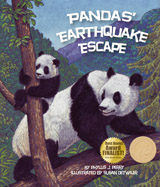Alignment to Standards for GA

| Grade | Number | Standard |
|---|---|---|
| 1 | S1CS4. c | Compare very different sizes, weights, ages (baby/adult), and speeds (fast/slow) of both human made and natural things. |
| 1 | S1L1. d. | Compare and describe various animalsãappearance, motion, growth, basic needs. |
| 2 | S2CS4.d. | Compare very different sizes, weights, ages (baby/adult), and speeds (fast/slow) of both human made and natural things. |
| 2 | S2E3. a. | effects that occur in a specific area caused by weather, plants, animals, and/or people. |
| 2 | S2L1. | Students will investigate the life cycles of different living organisms. |
| 3 | M&G.3. | use a letter/number grid system to determine location |
| 3 | S3CS4. b. | Use geometric figures, number sequences, graphs, diagrams, sketches, number lines, maps, and stories to represent corresponding features of objects, events, and processes in the real world. |
| 3 | S3CS7. b. | Some scientific knowledge is very old and yet is still applicable today. |
| 3 | S3CS8.c. | Scientists use technology to increase their power to observe things and to measure and compare things accurately. |
| 3 | S3L1. d. | Explain what will happen to an organism if the habitat is changed. |
| 3 | S3L2. | recognize the effects of pollution and humans on the environment. |
| 4 | S4CS4. b. | Use geometric figures, number sequences, graphs, diagrams, sketches, number lines, maps, and stories to represent corresponding features of objects, events, and processes in the real world. |
| 4 | S4CS7. b. | Some scientific knowledge is very old and yet is still applicable today. |
| 4 | S4CS8. c. | Scientists use technology to increase their power to observe things and to measure and compare things accurately. |
| 4 | S4L1. | Students will describe the roles of organisms and the flow of energy within an ecosystem. |
| 4 | S4L1. a. | Identify the roles of producers, consumers, and decomposers in a community. |
| 4 | S4L1. c. | Predict how changes in the environment would affect a community (ecosystem) of organisms. |
| 4 | S4L1. d. | effects on a population if some of the plants or animals in the community are scarce or if there are too many. |
| 4 | S4L2. | identify factors that affect the survival or extinction of organisms such as adaptation, variation of behaviors (hibernation), and external features (camouflage and protection). |
| 4 | S4L2. a. | Identify external features of organisms that allow them to survive or reproduce better than organisms that do not have these features (for example: camouflage, use of hibernation, protection, etc.). |
| 4 | S4L2. b. | Identify factors that may have led to the extinction of some organisms. (reasons for threatened/endangered/conservation issues) |
| 5 | S5CS4. b. | Use geometric figures, number sequences, graphs, diagrams, sketches, number lines, maps, and stories to represent corresponding features of objects, events, and processes in the real world. Identify ways in which the representations do not match their ori |
| 5 | S5CS7. b. | Some scientific knowledge is very old and yet is still applicable today. |
| 5 | S5CS8. c. | Scientists use technology to increase their power to observe things and to measure and compare things accurately. |
| 5 | S5E1. | Students will identify surface features of the Earth caused by constructive and destructive processes. |
| 5 | S5E1. a. | Identify surface features caused by constructive processes: deltas, sand dunes, earthquakes, volcanoes, faults |
| 5 | S5E1. b. | Identify and find examples of surface features caused by destructive processes; erosion, weathering, impact of organisms, earthquake, volcano |
| 5 | S5E1. c. | Relate the role of technology and human intervention in the control of constructive and destructive processes. Not limited to: Seismological studies, Flood control, (dams, levees, storm drain management, etc.), Beach reclamation |
| 5 | S5L2. | Students will recognize that offspring can resemble parents in inherited traits and learned behaviors. |
| 5 | S5L2. a. | Compare and contrast the characteristics of learned behaviors and of inherited traits. |
| K | SKCS4.c | Compare very different sizes (large/small), ages (parent/baby), speeds (fast/slow), and weights (heavy/light) of both manmade and natural things. |
| K | SKCS5.A | Describe and compare things in terms of number, shape, texture, size, weight, color, and motion. |
| K | SKL1. b | Group animals according to their observable features such as appearance, size, motion, where it lives, etc. (Example: A green frog has four legs and hops. A rabbit also hops.) |
| K | SKL2. | Students will compare the similarities and differences in groups of organisms. |
| K | SKL2. a | Explain the similarities and differences in animals. (color, size, appearance, etc.) |
| K | SKL2. c | Recognize the similarities and differences between a parent and a baby. |
| K | SKL2. d | Match pictures of animal parents and their offspring explaining your reasoning. (Example: dog/puppy; cat/kitten; cow/calf; duck/ducklings, etc.) |
| K | SSKG2 a. | Differentiate land and water features on simple maps and globes. |
| K | SSKG2 b. | Explain that maps and globes show a view from above. |
| K | SSKG2 c. | Explain that maps and globes show features in a smaller size. |